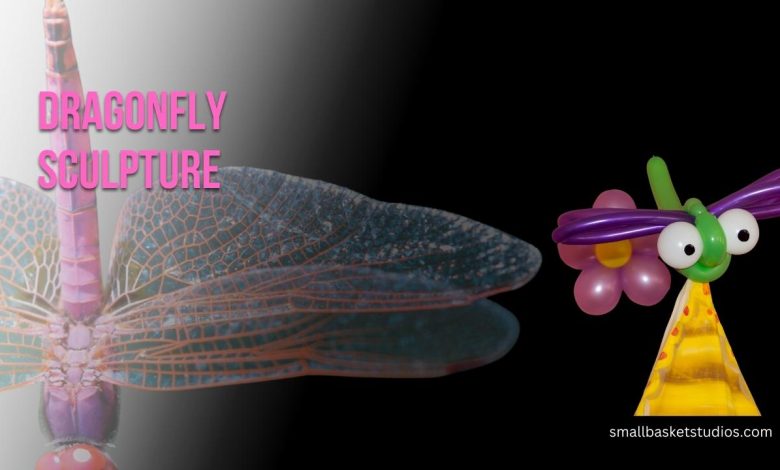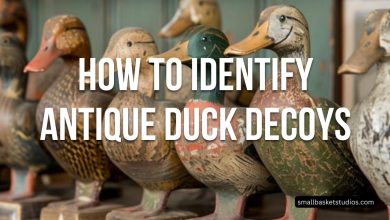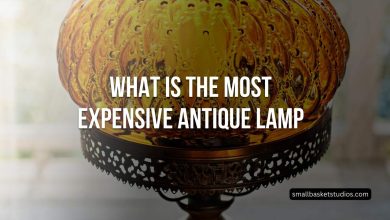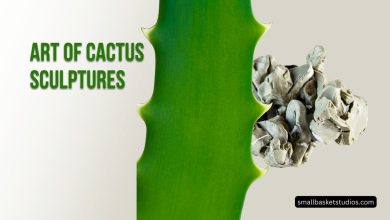Dragonfly Sculpture

Dragonflies have long captivated human imagination due to their graceful beauty, symbolising transformation, adaptability and nature’s delicate balance. No wonder sculptures featuring these majestic insects have become such a beloved art form worldwide! In this comprehensive guide, we’ll delve into all things related to these sculptures, including their history, types, materials placement and maintenance requirements, and maintenance tips. So whether you are an art enthusiast, nature lover or homeowner seeking outdoor decor upgrades, this is your one-stop source of information on dragonfly sculptures!
The Significance of Dragonflies in Art and Culture
Dragonflies hold great cultural and artistic symbolism across different societies. Here are some key components that underscore their significance within art and culture:
Transformation and Change:
Dragonflies have long been seen as symbols of transformation and change due to their remarkable lifecycles, in which aquatic nymphs undergo dramatic metamorphosis into graceful flying adults – an act which serves as an excellent symbol for personal growth and change; many cultures view dragonfly metamorphosis as symbolic for personal transformation, with artists often using dragonflies as representations that we all can adapt and change ourselves over time.
Adaptability and Resilience:
Dragonflies are known for their agility and adaptability, being adept at swiftly flying multiple directions at once while changing course quickly and transforming rapidly when necessary. Their adaptability often resonates with human emotions as a symbol that we should remain flexible yet resilient when facing life’s difficulties.
Harmony and Balance:
In some cultures, dragonflies represent harmony and equilibrium. Their graceful flight gives rise to feelings of serenity and tranquility while their graceful journey across water conveys this symbolism through artwork to convey harmony in nature and life.
Prosperity and Good Fortune:
In certain Asian cultures, dragonflies have long been seen as symbols of prosperity and good luck, believed to bring wealth and positive energy. This belief has resulted in numerous works of art using dragonfly motifs such as paintings, textiles and jewelry featuring this motif.
Aesthetic Inspiration:
Dragonflies have long inspired artists with their delicate shapes and brilliant iridescent wings, creating captivating paintings, sculptures and craftsman. Dragonfly motifs can even be found throughout history from pottery productions to jewelry designs!
Spiritual and Mythological Significance:
Dragonflies have great spiritual or mythological meaning in some indigenous cultures, acting as messengers or signs from supernatural beings. Native American traditions associate dragonflies with water spirits who symbolize renewal and transformation – these dragonflies may serve as messengers.
Environmental Awareness:
Within contemporary art and culture, dragonflies have long been used as symbols of environmental conservation and awareness. Their presence or absence may indicate how healthy aquatic ecosystems are; artists or environmentalists often include dragonflies in their work to call attention to preserving natural habitats.
Types of Dragonfly Sculptures
Dragonfly sculptures come in various forms, offering unique possibilities for enhancing your space. Here are the most common types:
Wall-Mounted Dragonfly Sculptures
Wall-mounted dragonfly sculptures are designed to be hung on walls, fences, or other vertical surfaces. These sculptures bring an artistic touch to your outdoor or indoor walls, making them ideal for adding character to gardens, patios, or living spaces.
Garden Stakes and Ornaments
Garden stakes and ornaments featuring dragonflies are a popular choice for outdoor decor. These sculptures are typically designed with stakes or prongs that can be inserted directly into the ground, flowerbeds, or pots. They add a playful and whimsical element to your garden, making it a welcoming haven for human admirers and real dragonflies.
Hanging Dragonfly Sculptures
Hanging dragonfly sculptures are suspended from trees, pergolas, or overhead structures. They create a dynamic visual effect as they sway gently in the breeze, mimicking the natural movement of real dragonflies. These sculptures can be made from glass, metal, or recycled materials, offering various styles and colours.
Tabletop and Indoor Dragonfly Sculptures
Tabletop dragonfly sculptures are designed for indoor use and often serve as exquisite centrepieces or decorative accents. They are made from various materials, including glass, crystal, or porcelain, and are ideal for adorning mantels, shelves, or tables. Their elegance and intricate detailing make them conversation starters in any room.
Custom and Personalized Dragonfly Sculptures
Custom and personalised dragonfly sculptures offer endless possibilities for those seeking a truly unique piece of art. Talented artisans can create sculptures tailored to your preferences, whether you want a specific size, colour, or design. Custom dragonfly sculptures make meaningful gifts and commemorate special occasions.
Now that you have an overview of the different types of dragonfly sculptures let’s explore the materials and techniques used in crafting these captivating creations.
Materials and Techniques
The beauty and durability of a dragonfly sculpture largely depend on the materials used and the craftsmanship employed. Let’s explore the standard materials and techniques for creating these exquisite sculptures.
Common Materials Used in Dragonfly Sculptures
Metal: Metal dragonfly sculptures are famous for their durability and ability to withstand outdoor elements. Common metals include iron, steel, copper, and aluminium. Metal sculptures can be intricate and may develop a beautiful patina over time.
Glass: Glass dragonfly sculptures are renowned for their luminous and translucent qualities. Artisans use glass blowing and fused glass to create delicate and colourful wings. These sculptures are perfect for indoor and outdoor display, as they capture and play with natural light.
Wood: Wooden dragonfly sculptures offer a rustic and natural charm. Artisans carve, shape, and paint wood to create intricate dragonfly forms. Cedar, redwood, and driftwood are popular choices due to their resistance to decay.
Ceramic and Pottery: Ceramic dragonfly sculptures bring an artistic touch to gardens and interiors. They can range from hand-painted ceramic tiles to large, glazed ceramic pieces. Their versatility allows for a wide range of shapes and designs.
Recycled and Upcycled Materials: Eco-conscious artists often craft dragonfly sculptures from recycled materials like bicycle chains, silverware, and discarded metal objects. These sculptures not only showcase creativity but also promote sustainability.
Resin: Resin dragonfly sculptures are lightweight and can replicate the appearance of other materials like metal or stone. They are often hand-painted to achieve lifelike colours and details.
Sculpting Techniques and Craftsmanship
Creating a dragonfly sculpture involves a combination of artistic vision and technical skill. Depending on the chosen material, artists employ various techniques:
Metalwork: Metal sculptures are typically created through welding, bending, and shaping metal sheets or rods. Skilled artisans may use forging and hammering techniques to achieve intricate details.
Glass Artistry: Glass dragonfly wings are meticulously crafted using techniques like glassblowing, fusing, and stained glass. These methods require precision and a deep understanding of the properties of glass.
Wood Carving: Woodworkers carve dragonfly sculptures using chisels, rasps, and carving knives. The wood may be treated with stains or paints to enhance its appearance and protect it from the elements.
Ceramic Art: Ceramic dragonflies are formed through hand-building, slab construction, or wheel-throwing techniques. The pieces are then kiln-fired and glazed for durability and aesthetics.
Recycled Art: Artists working with recycled materials often employ welding and soldering techniques to transform discarded objects into dragonfly sculptures. These pieces require a keen eye for repurposing materials.
Resin Casting: Resin sculptures are created by pouring liquid resin into moulds, allowing for intricate details and customization. After curing, they are carefully painted to achieve the desired look.
Sculptors bring unique styles and creativity to each piece, resulting in a wide array of dragonfly sculptures catering to different tastes and preferences.
Choosing the Perfect Dragonfly Sculpture
Selecting a suitable dragonfly sculpture for your space requires careful consideration. Here are some key factors to keep in mind:
Considerations for Outdoor and Indoor Placement
Before choosing a dragonfly sculpture, determine whether it will be indoors or outdoors. Outdoor sculptures must withstand weather conditions, so materials like metal, glass, and ceramics are suitable choices. For indoor use, you have more flexibility in material selection.
Size and Scale
The size of your dragonfly sculpture should complement the space it will occupy. A small tabletop sculpture might get lost in a large garden, while an oversized sculpture could overwhelm a small patio. Consider the scale of your surroundings when making your choice.
Colour and Finish
Dragonfly sculptures come in a wide range of colours and finishes. Opt for colours that harmonize with your existing decor or garden palette. Natural and earthy tones work well in outdoor settings, while vibrant and bold colours can make a statement indoors.
Budget Considerations
Dragonfly sculptures vary in price, depending on size, material, and craftsmanship. Set a budget before you start shopping to help narrow down your options. Remember that investing in a quality sculpture can provide years of enjoyment.
Now that you know what to look for in a dragonfly sculpture, let’s explore how to place and display these beautiful creations effectively.
Placement and Display
The placement of your dragonfly sculpture plays a crucial role in its impact and aesthetic appeal. Whether you’re decorating a garden, patio, or interior space, here are some placement and display tips to consider:
Garden and Outdoor Placement Tips
Create a Focal Point: Place your dragonfly sculpture strategically as a focal point in your garden. It could be at the centre of a flowerbed, near a water feature, or nestled among lush foliage.
Consider the Viewing Angle: Consider how your sculpture will be seen from various angles. Ensure it looks captivating from multiple viewpoints, including your home’s windows.
Grouping: You can enhance the visual appeal by grouping several dragonfly sculptures or combining them with other garden decor, like bird feeders or wind chimes.
Illumination: Consider adding outdoor lighting to highlight your sculpture at night, creating an enchanting atmosphere in your garden.
Indoor Placement Ideas
Mantels and Shelves: Tabletop and indoor dragonfly sculptures make elegant additions to mantels, shelves, or display cabinets. Position them in a way that complements your interior design.
Wall Art: Wall-mounted dragonfly sculptures can be arranged in groupings or used as standalone pieces to decorate your living room, bedroom, or hallway.
Entryways: Make a lasting impression by placing a striking dragonfly sculpture in your entryway. It can serve as a welcoming symbol and conversation starter for guests.
Lighting Integration: Combine your dragonfly sculpture with lighting fixtures like sconces or pendant lights to create a cohesive and artistic interior design.
By carefully considering placement and display, you can maximize the visual impact of your dragonfly sculpture and create an inviting and harmonious environment.
Maintenance and Care
Regular maintenance and care are essential to ensure the longevity and beauty of your dragonfly sculpture. Here’s how to take care of your sculpture properly:
Cleaning and Preserving Your Sculpture
Dust and Debris Removal: Use a soft brush or cloth to remove dust, dirt, and debris from the sculpture’s surface. For metal sculptures, a feather duster or a can of compressed air can be handy.
Cleaning Solutions: If your sculpture is made of glass or ceramic, you can use a mild glass or ceramic cleaner. A mixture of water and a few drops of mild dish soap works well for metal sculptures. Avoid abrasive cleaners that can damage the finish.
Rinse Thoroughly: Rinse the sculpture thoroughly with clean water to remove any cleaning residue. Dry it gently with a soft cloth or allow it to air dry.
Seasonal Considerations
Winter Protection: If you live in an area with harsh winters, consider moving your outdoor dragonfly sculpture indoors or covering it with a waterproof tarp during the winter months to protect it from freezing temperatures and moisture.
Sun Protection: Prolonged exposure to direct sunlight can cause fading in coloured sculptures. If your sculpture is in a sunny spot, consider using UV-resistant coatings or relocating it to a shadier area.
Restoring Aged Sculptures
Over time, outdoor dragonfly sculptures may develop a patina or weathered appearance. If you wish to restore the original finish, follow these steps:
Cleaning: Start by cleaning the sculpture, as mentioned earlier, to remove dirt and debris.
Rust Removal: For metal sculptures that develop rust, gently remove the rust with a wire brush or fine sandpaper. Apply a rust converter or primer to prevent further rusting.
Refinishing: Depending on the material, you may need to refinish your sculpture with the appropriate paint, stain, or sealant to restore its original lustre.
Following these maintenance guidelines, you can enjoy your dragonfly sculpture for years, preserving its beauty and significance.
DIY Dragonfly Sculptures
If you’re feeling creative and want to personalize your dragonfly sculpture, consider embarking on a do-it-yourself (DIY) project. Here’s a step-by-step guide to creating a simple dragonfly sculpture:
Materials and Tools Needed
Materials:
- Metal sheet (for the body)
- Metal wire (for the legs and antennae)
- Glass or acrylic beads (for the eyes)
- Acrylic paints (for colouring)
- Clear varnish or sealant (for protection)
- Wooden dowel or stake (for mounting)
Tools:
- Tin snips or metal shears
- Needle-nose pliers
- Wire cutters
- Drill with a tiny drill bit
- Paintbrushes
- Safety goggles and gloves
Step-by-Step Instructions
Design Your Dragonfly: Start by sketching the design of your dragonfly on a piece of paper. Decide on the size and shape of the wings, body, legs, and antennae.
Cut the Metal Sheet: Use tin snips or metal shears to cut the metal sheet into the desired shape of the dragonfly’s body. Smooth any sharp edges with a file.
Create the Wings: Cut the metal sheet into two wing shapes. These should be larger than the body and can have curved or pointed ends for added detail.
Form the Body: Bend the metal sheet for the body into a curved shape. You can use pliers to create gentle curves for a more realistic look.
Attach the Wings: Drill small holes near the top of each wing. Attach the wings to the body using metal wire, threading it through the holes and twisting it securely on the backside of the body.
Add Legs and Antennae: Cut and shape thin metal wire to create the legs and antennae. Attach them to the body using wire and pliers.
Attach Bead Eyes: Drill small holes for the eyes and attach glass or acrylic beads with wire to create the eyes of your dragonfly.
Paint and Finish: Use acrylic paints to add colour and detail to your dragonfly sculpture. Once the paint is dry, apply a clear varnish or sealant to protect the finish.
Mount Your Dragonfly: Attach your dragonfly sculpture to a wooden dowel or stake using wire or adhesive. This allows you to place it in your garden or outdoor space.
Display Your Creation: Find the perfect spot to display your DIY dragonfly sculpture and enjoy your artistic achievement.
Creating your dragonfly sculpture can be a rewarding and personalized project, allowing you to express your creativity and style.
Dragonfly Sculptures in Art and History
Dragonflies have captured the imagination of artists and cultures worldwide for centuries. Let’s explore their significance in art and history:
Dragonflies in Ancient Cultures
Japanese Culture:
In Japan, dragonflies are associated with the samurai and are considered symbols of strength and courage. They are often depicted in traditional art forms like paintings and kimono designs.
Native American Culture:
Some Native American tribes view dragonflies as transformation and spiritual growth symbols. They are featured in tribal art and stories.
Chinese Culture:
In Chinese folklore, dragonflies are associated with prosperity and harmony. They are considered auspicious, and their images appear in Chinese paintings, textiles, and ceramics.
Famous Dragonfly Sculptures Around the World
“Acrobat” by Manolo Valdés: Located in New York’s Central Park, this large dragonfly sculpture by Spanish artist Manolo Valdés is a testament to the fusion of art and nature in a public space.
“Le Dragonfly” by Claude and François-Xavier Lalanne: This iconic dragonfly sculpture is part of the Lalanne brothers’ whimsical menagerie. It reflects their passion for merging art and nature in their creations.
“The Dragonfly” by Cornelia Konrads: This stunning installation in Germany features a dragonfly perched atop a metal stalk, illustrating the delicate balance between nature and art.
Contemporary Artists and Their Dragonfly Creations
Many contemporary artists continue to draw inspiration from dragonflies, creating unique and innovative dragonfly sculptures. Some artists to watch include:
Janet Laurence:
An Australian artist known for her environmentally conscious sculptures, Janet Laurence’s dragonfly-inspired artworks often incorporate recycled materials.
Joel Amit:
This Israeli artist specializes in creating intricate dragonfly sculptures from metal and glass. His work is celebrated for its lifelike details and vibrant colours.
Kate MccGwire:
Renowned for her surreal and otherworldly sculptures, Kate MccGwire has produced stunning dragonfly-themed installations that challenge our perceptions of beauty and nature.
Dragonfly sculptures continue to evolve as contemporary artists push the boundaries of creativity, offering fresh interpretations of these enchanting insects.
FAQs
How do I prevent my dragonfly sculpture from fading in the sun?
To prevent fading, consider these tips:
- Choose sculptures with UV-resistant finishes.
- Apply a clear UV-protective sealant or varnish.
- Place your sculpture in a shaded or partially shaded area.
- Rotate the sculpture periodically to ensure even exposure.
Can dragonfly sculptures be used as functional art?
Yes, dragonfly sculptures can serve functional purposes. For example, some sculptures are designed as garden stakes or wind chimes, adding beauty and function to your outdoor space. Additionally, wall-mounted sculptures can double as hooks or hangers for outdoor accessories.
Are there any cultural meanings associated with dragonfly sculptures?
Yes, dragonflies hold cultural significance in various cultures. They are often associated with qualities like transformation, adaptability, and prosperity. Incorporating dragonfly sculptures into your decor can reflect these cultural meanings.
What’s the difference between handcrafted and mass-produced dragonfly sculptures?
Handcrafted dragonfly sculptures are individually created by skilled artisans, resulting in unique and often more intricate designs. Mass-produced sculptures are made in larger quantities using moulds or machines, which can lead to more standardized designs. Handcrafted sculptures tend to have a higher level of craftsmanship and personalization.
How do I commission a custom dragonfly sculpture?
To commission a custom dragonfly sculpture, follow these steps:
Research Artists: Look for artists or artisans known for their expertise in creating sculptures with your desired material and style.
Contact the Artist: Reach out to the artist to discuss your vision, including size, design, and any details you want to include.
Agree on Terms: Discuss pricing, payment, and a timeline for the project. Make sure to have a written agreement outlining these details.
Collaborate: Work closely with the artist during creation, providing feedback and approvals as needed.
Receive Your Sculpture: Once the sculpture is completed to your satisfaction, arrange for delivery or pickup.
Conclusion
Dragonfly sculptures are more than decorative; they embody art, nature and symbolism. We’ve explored all facets of dragonfly sculpture’s world: their meaning in art and culture and various types, materials and placement options available today. In this guide, we have given an in-depth exploration of its world – its significance within art history, the various materials it can come in, and placement considerations. Dragonfly sculptures offer endless artistic potential when decorating gardens, beautifying homes and starting creative DIY projects. By understanding their history and appreciating their craftsmanship while giving your dragonfly sculptures regular care and maintenance, you can savour their lasting beauty and significance in your daily life. There are ready-made pieces from retailers like Urban Outfitters or custom crafts that ake yourself; dragonflies remain captivating artworks that allow us to appreciate both e and art’s transformative powers.




